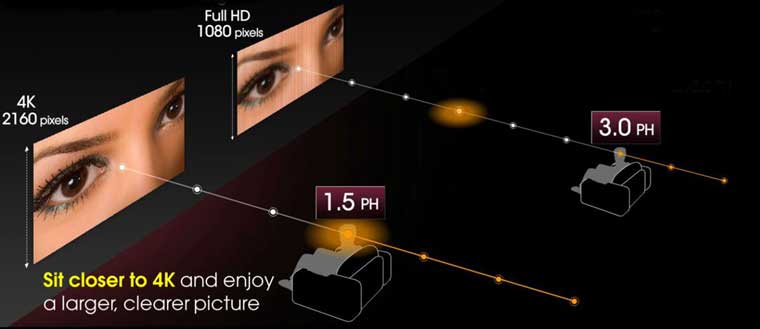
Resolution
Of all the components that go into choosing a projector for home or business settings, one of your top considerations should be projector resolution. This is the number of pixels (individual points of color) that are used to create an image. It’s expressed as the number of pixels on the horizontal axis, by the number of pixels on the vertical axis.
Let’s discuss the different resolution terms and what they mean for projection to help you choose the right product for the job:
SVGA which stands for Super Video Graphics Array – one of the first resolution standards at 800 X 600 pixels with a 4:3 aspect ratio.
XGA stands for Extended Graphics Array – the next generation after SVGA which has the same 4:3 aspect ratio but the resolution is better at 1024 X 768.
WXGA which stands for Wide Extended Graphics Array — the next generation after XGA, and one of the most common resolutions especially on entry level projectors, with a 16:10 aspect ratio and 1280 X 800 pixels. This ratio is used on widescreen images since there are almost twice as many horizontal pixels than vertical pixels.
FHD which stands for short Full High Definition or it is sometimes called 1080p resolution. It offers an aspect ratio of 16:9 and 1920 X 1080 pixels.
WUXGA – stands for Widescreen Ultra Extended Graphics Array — offers an aspect ratio of 16:10 and 1920 X 1200 pixels.
UHD stands for Ultra High Definition. It is often referred to as 4K in consumer applications but this is different from the 4K production standard. This is two times the width and height of the previous Full HD consumer standard which was defined as 1920 x 1080 pixels. UHD has an aspect ratio of 16:9 and the resolution is 3840 X 2160 pixels.
4K is the professional production standard defined by the Digital Cinema Initiatives (DCI). It has more horizontal resolution along with a slightly wider aspect than UHD (consumer 4K) used in consumer flat-panels. This is two times the width and height of the previous 2K professional standard which was defined as 2048 x 1080 pixels. The aspect ratio of 4K is 1.9:1 and its resolution is 4096 X 2160 pixels. Most LCoS based native 4K projector use imagers based on professional versions so they can reproduce true cinematic 4K.

What about 8K?
8K projectors will probably be introduced in the next few years. Consumer “8K UHD” twice the width and height of “4K UHD” with a resolution of 7680 x 4320 pixels.
Consideration in Choosing Resolution
While there are a variety of standards associated with projector resolutions, the ones you’ll want to keep an eye out for include WXGA, FHD, WUXGA, and 4K UHD. In order to choose the right standard for your needs, you need to consider the type of media that will be shown using the projector (videos, PowerPoint presentations, etc.), and also the general size of the images and picture quality.
Learn More about Resolution



